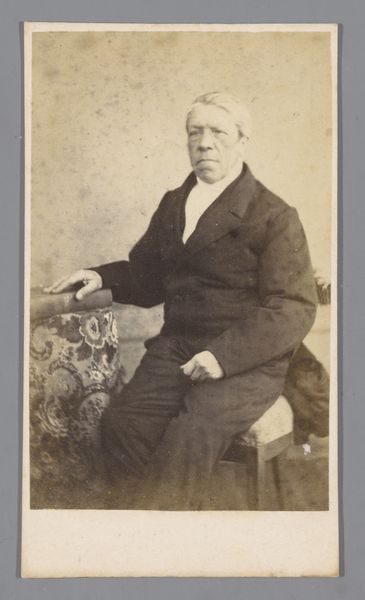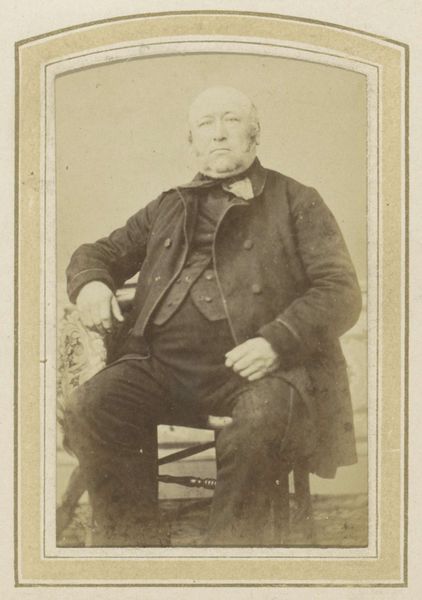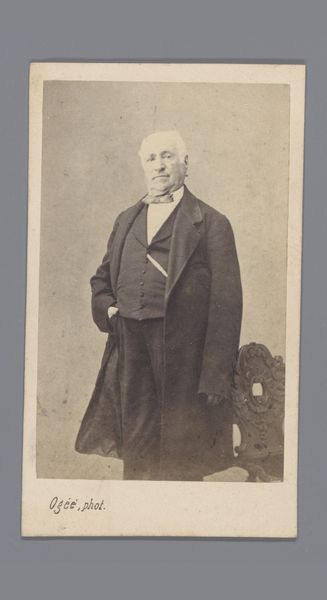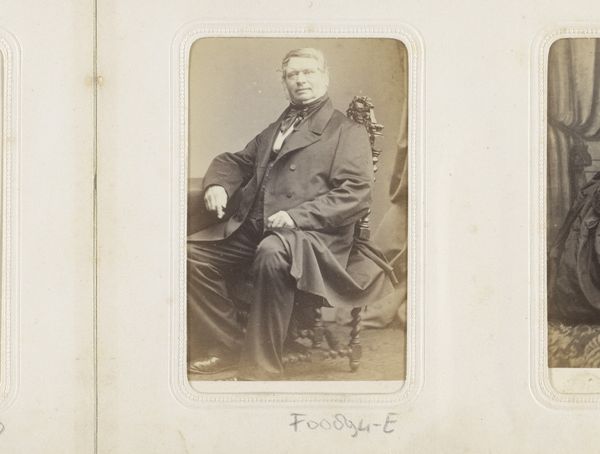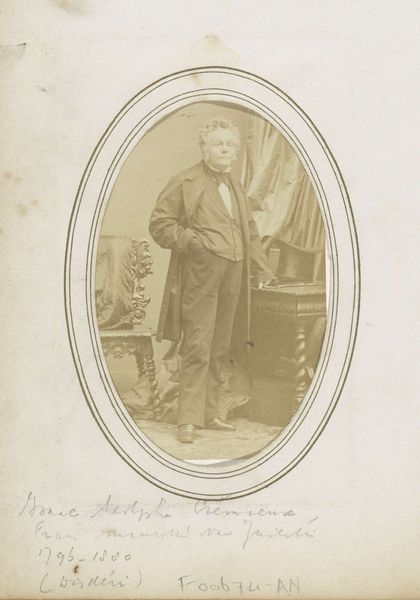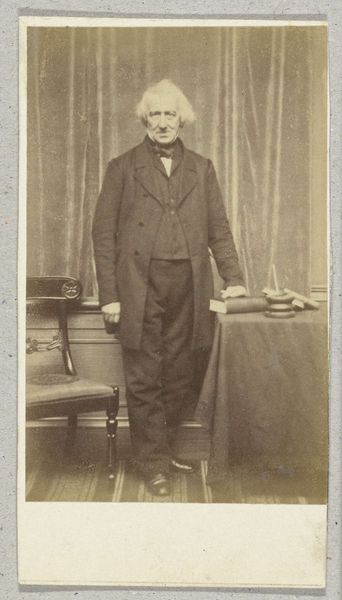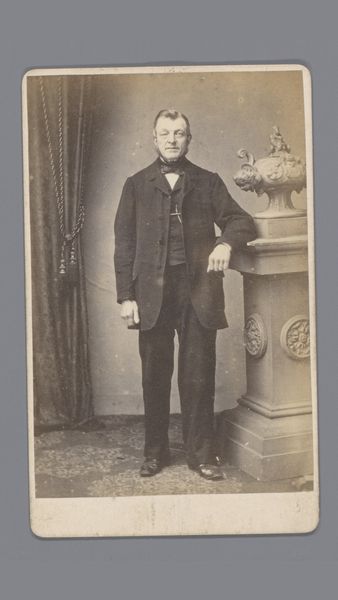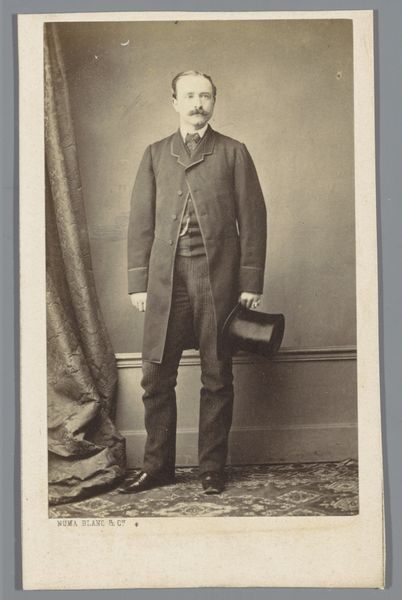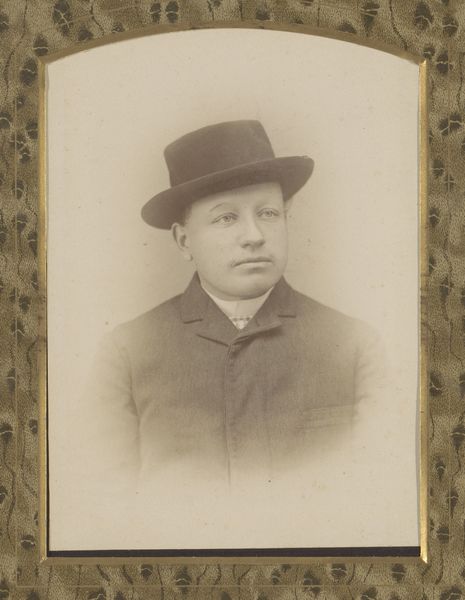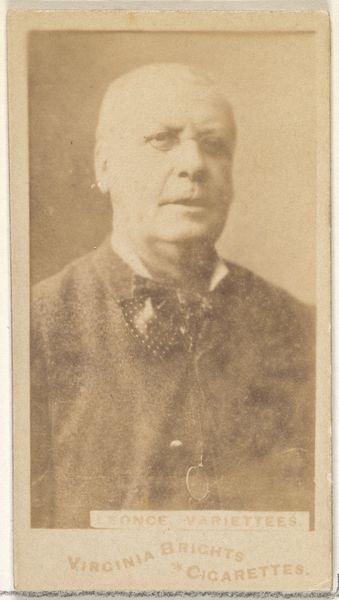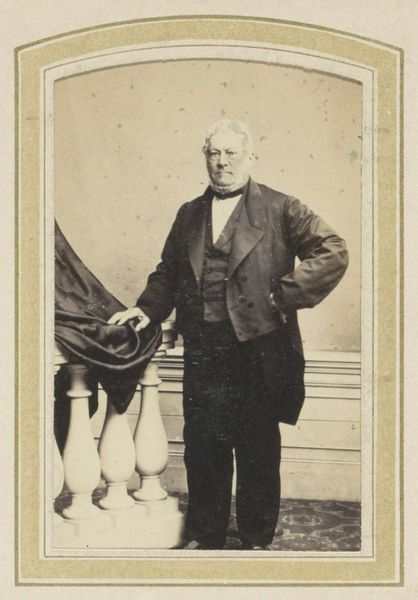
photography, gelatin-silver-print
#
portrait
#
charcoal drawing
#
photography
#
historical photography
#
gelatin-silver-print
#
19th century
#
portrait drawing
#
fine art portrait
#
realism
Dimensions: height 211 mm, width 152 mm
Copyright: Rijks Museum: Open Domain
Curator: This is a fascinating gelatin silver print from between 1880 and 1903, entitled "Portret van Nicolaas Beets". Editor: My first impression is of somber authority. The sepia tones and the subject's somewhat severe expression definitely give off a serious vibe. Curator: Indeed. The choice of the gelatin silver process speaks to its accessibility as a medium. It was a commercially available photographic printing process that enabled mass production of portraits, extending access to visual representation for the burgeoning middle classes. Editor: I’m drawn to that small rosette on his lapel; it signifies his membership in some kind of organization, likely indicative of his social standing and achievements within his community. It’s a subtle visual cue to read him as an accomplished, established figure. Curator: Consider the materiality of this image: the texture of the photographic paper itself, the ways in which light interacts with the silver particles embedded within. Also note the way the clothing, specifically that imposing overcoat, obscures most of his figure, only allowing his hands and face to be on full display. These aspects of the production influence how we understand Beets. Editor: Yes, there is definitely a story being told with those elements. His pose, with his hand resting on what appears to be a table or desk, evokes a sense of thoughtfulness, almost like a philosopher pausing in deep contemplation. It is a very constructed, deliberate image intended to convey very specific virtues about its subject. Curator: Photography during this era wasn't merely about documentation; it became a site of industrial processes of representation, shaping identities and social memory. The production, circulation and eventual consumption of images of well-known figures like Nicolaas Beets became tools of cultural formation. Editor: And beyond the manufacturing aspects, this image acts almost like a cultural timestamp. The seriousness, the composition; these speak to values and ideals held by that particular society at that time. By considering his stance and the limited light illuminating him, the picture shows an undeniable presence of importance and status. Curator: Looking at the details of process helps us better understand its cultural meaning. Thank you. Editor: And considering those meanings gives us better appreciation for process.
Comments
No comments
Be the first to comment and join the conversation on the ultimate creative platform.
